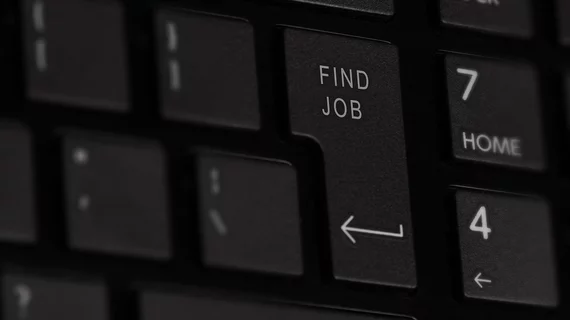Pandemic-induced economic recession will likely hinder radiologist recruitment for years
The current economic downturn brought on by the coronavirus pandemic is likely to affect radiologist recruitment in the months and years ahead, experts warned Friday.
Such was the case back in 2009, when the Great Recession brought about a “protracted, seven-year struggle” to recruit medical students into the specialty, three doctors noted in Current Problems in Diagnostic Radiology. Diagnostic imaging interest seems to be tied to a robust economy and it stands to reason that the field may take a while to recover from this latest setback.
“The 2008 recession serves as a case study in just how quickly applicants will pivot to other specialties at the first sign of economic uncertainty,” Darel Heitkamp, MD, a radiologist with AdventHealth Orlando, and colleagues from two other institutions wrote May 15. “With the emergence of the COVID-19 pandemic, alarm bells again signal trouble for radiology recruitment. Lack of an effective treatment or vaccine therapy threatens a protracted period of social distancing and shuttering of our economy. The extent to which radiology will be affected by the economic decline is still uncertain, although some projections show a substantial potential impact on radiology business, salaries and the overall job market,” the team added.
Reasons for the radiology recruitment downturn in 2009, they noted, included uncertainty surrounding the specialty’s business model after passage of the Affordable Care Act, Medicare cuts to imaging revenue, and the recession’s impact on the radiology job market. Even before then, the field has long suffered as a “plan B” for those who couldn’t make it into more competitive specialties.
To get past this expected recruiting downturn—and others that will arise in the future—Heitkamp and colleagues said the field must embrace this reality and figure out how to counter it. “It's vital that as a specialty we ground ourselves in this truth and work harder to directly market radiology to medical students,” the authors argued.
They’re predicting that this trend will start impacting radiology as soon as the next match in 2021.
“Mitigation may be possible with assertive departmental outreach focused on educating local medical students about why radiology is an excellent career choice for them,” Heitkamp and MD coauthors from Mount Auburn Hospital in Cambridge, Massachusetts, and Houston Radiological Associates concluded. “Messaging should seek to establish a positive and realistic narrative, highlighting our specialty's many strengths while at the same time dispelling the common misconceptions,” the team added.

